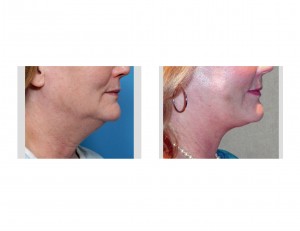This generation of facelift patients is seeing a paradigm shift in how this facial rejuvenation procedure is being performed. In days gone by, one appeared when they were in their late 50s and 60s and had the procedure as a ‘reward’ for their years of life or waited until they retired when they had more than an adequate amount of time to recover. Today people are taking a much more proactive approach, appearing earlier in life with less advanced degrees of facial aging. (some late facial aging patients still do appear however)

The ‘early facelift’ concept is one of scaling back the extent of the procedure of a traditional or full facelift. Because there are so many moving parts to a facelift (location of incisions, extent of skin undermining, fat extraction/fat grafting, muscle tightening, SMAS manipulation, amount of pull/skin excision, skin resurfacing option), this has led to many names being given to these types of facelifts. Most of these facelifting procedures claim to be proprietary and a ‘breakthrough procedure’ when the reality is there is nothing innovative or revolutionary about them other than the name.
What all of these named more minimally invasive facelifts procedures share is less incisional length and skin undermining, limited SMAS tightening and greater use of skin resurfacing methods. Some of these brandname ‘lifts’ focus on using less anesthesia and all promise a quick recovery. (which when you do less surgery is inevitable) While many of these named facelift procedures have their critics, and most rightfully earned based on how they are promoted, the reality is that they all produce satisfying results when applied to the younger facial aging patient. (less of a problem = less of an operation needed)
Most unhappy patients from smaller facelifts are usually the result of poor patient selection and/or unrealistic expectations. The patient who expects a lot for a minimal investment is an easy setup for this type of problem. The patient who really needs a full facelift but is under the impression (induced on their own or otherwise) that a ‘quickie’ procedure under local anesthesia will do the trick is bound to be disappointed. Even in the patient who has a limited budget and says they will be happy with whatever result they get, usually will not be.
But in the well selected facial aging patient (most 40 and early 50 year olds will be), a smaller version of a traditional facelift may in fact be just right for their needs.
Dr. Barry Eppley
Indianapolis, Indiana


